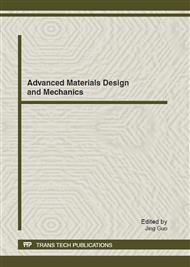p.615
p.620
p.627
p.632
p.636
p.640
p.645
p.652
p.657
Sensor Optimization for Cutting Status Monitoring in Single Manufacturing Unit
Abstract:
The effectiveness of status monitoring in cutting process is contingent on the effectiveness of the sensor location optimization. A novel adaptive evolutionary algorithm (AEA) based on genetic algorithm (GA) to achieve an optimal sensor configuration for monitoring the cutting status closely related to the workpiece quality is proposed. Based on an understanding of the cutting principle, the minimal failure probability at minimum cost is the optimal target and the detectability and the false alarm rate are defined as the constraint conditions. The feasible region of solution is presented in decimal coding . The crossover operator and population size are adapted relative to the iterations estimated by a Markov model,which improve the convergence. The results of a case study have been found to agree well with the optimized results by AEA .The optimal scheme of AEA yields the minimal sensing stations while simultaneously attaining 99.99% system detectability and renders nearly 60% decrease in sensor cost in comparison to the scheme of saturated sensing.
Info:
Periodical:
Pages:
636-639
Citation:
Online since:
September 2012
Authors:
Price:
Сopyright:
© 2012 Trans Tech Publications Ltd. All Rights Reserved
Share:
Citation:


